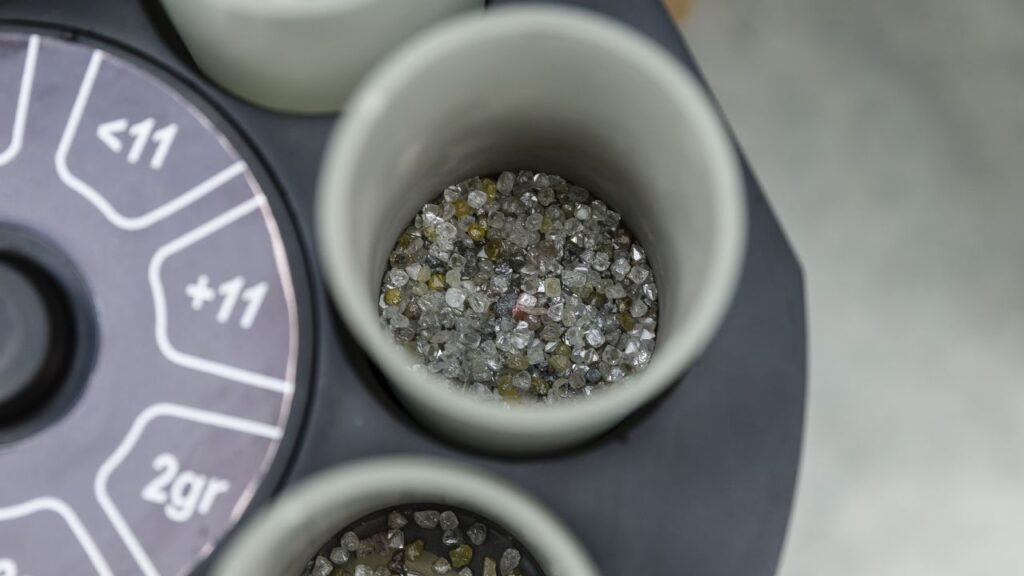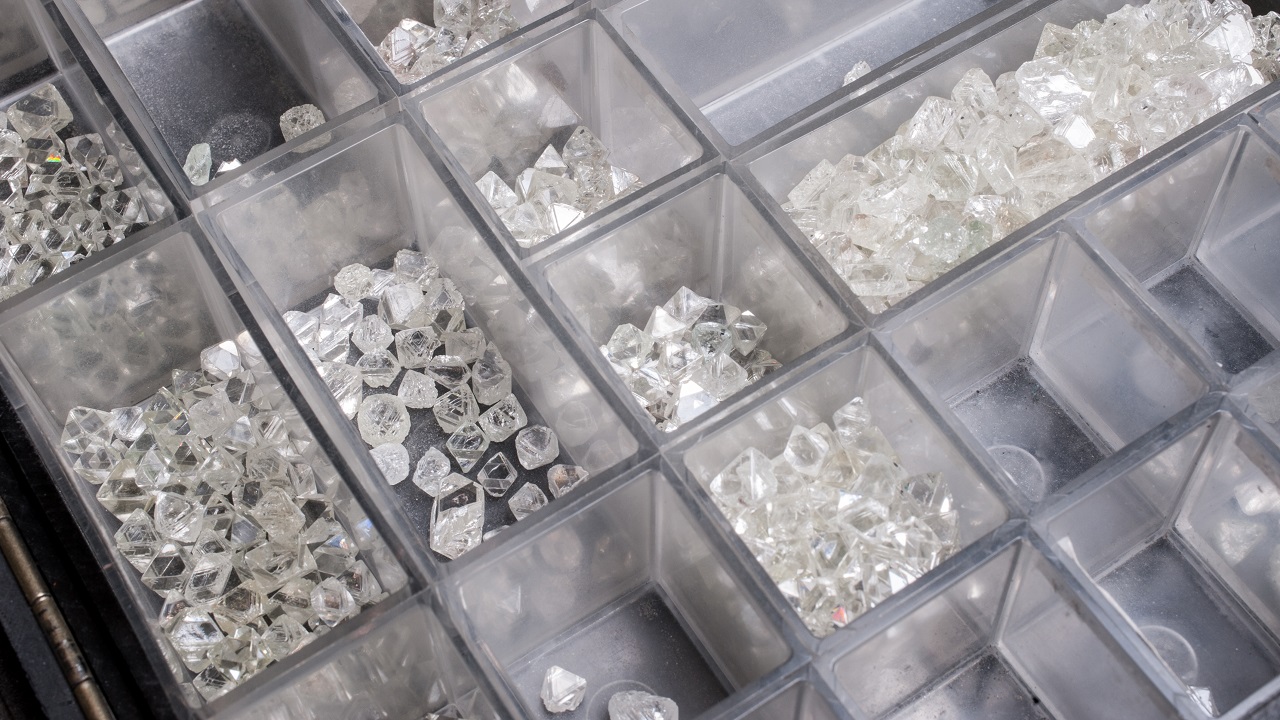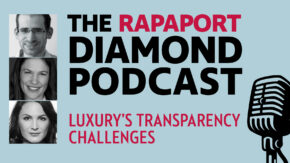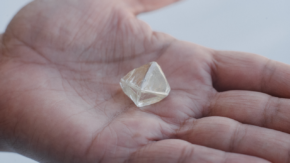Sanctions on Russian diamonds and diamond jewelry went into effect on March 1 across Group of Seven (G7) nations, expanding the ban to 1-carat and larger polished stones manufactured in a third country from Russian rough. Previously, goods “substantially transformed” (i.e., manufactured) in countries such as India were technically legal in the US. The US and other member countries have released information on how enforcement will work, but many questions remain.
US Customs and Border Protection has ordered importers to use a self-certification statement declaring that the diamonds are not Russian. This is likely a temporary measure while US authorities devise a way to enforce the rules.
The industry is still unsure how the ban will work in both the short and the long term. Dealers have begun sending goods to the US with self-declaration statements, but there is uncertainty about what will happen if customs authorities ask for evidence about a particular shipment and whether the US will add more complex requirements later.
“It’s a little confusing for the trade,” a manufacturing executive said on condition of anonymity. “Everyone is a little skeptical of how to make it work in such a way that…none of the Russian diamonds will infiltrate into the US. But people have now woken up to the fact that this is coming.”
Customs and Border Protection said it would issue “additional filing requirements” once the necessary enhancements to the filing system, called the Automated Commercial Environment (ACE), are ready.
Here are four things the industry wants to know but does not have answers for.
1. What evidence will US customs authorities require?
The Responsible Jewellery Council (RJC) has advised its members to “maintain documented proof prior to issuing an attestation.” The Jewelers Vigilance Committee (JVC) has also issued frequently asked questions (FAQs) in which it says importers must have evidence available. But at present, the US is not mandating the submission of any evidence of non-Russian origin beyond the self-declaration.
This is likely to change. The G7 leaders’ statement of December 6 said members of the bloc that were “major importers of rough diamonds” will “establish a robust traceability-based verification and certification mechanism for rough diamonds within the G7 by September 1, 2024.” Logically, this would be useful only if the resulting polished also carried some sort of traceability when entering the major retail markets, of which the US is the biggest.
Yet nothing about this has been confirmed. In terms of the next steps, the Office of Foreign Assets Control (OFAC), the US’s enforcement body for sanctions, has said the scope of coverage will be extended to 0.50 carats and larger from September 1.
However, we do get an indication of how it might work from another G7 member, which brings us to question number two.
2. Will the US adopt the G7 Certification Scheme as the EU has described it?
The US first imposed sanctions on Russian diamonds shortly after Russia’s invasion of Ukraine in February 2022. At the time, the EU did not follow suit, reportedly because of Antwerp’s concerns that a ban would just shift the market for Russian diamonds to other trading centers. Once the EU eventually announced sanctions in December 2023, it ended up being more transparent about the plans than any other G7 member, including the US.
We know a lot about the EU plan for a certification scheme to verify the non-Russian status of diamonds. It explained it in detail in December.
On March 1, 2024, it further described the plan in its FAQs: Information identifying a rough diamond will be “onboarded” (i.e. registered) on a traceability platform in the producer country. Once the rough arrives at the “G7 import node” — referring to Antwerp’s customs center, known as the Diamond Office — the authorities will carry out a physical check of the diamond. A blockchain-based ledger will also “query validated traceability systems to obtain already existing information about the diamond to be imported in a G7 jurisdiction. A G7 certificate is then issued and added to the G7 ledger after successful verification.”
This system is in place as of March 1 in a pilot phase and will be fully operational from September 1, the EU said. During this “sunrise period,” market participants can “choose to use either the traceability-based certification or other evidence” when importing into the EU. From September 1, using this certification will be mandatory for imports of rough diamonds weighing 0.50 carats or more. It also notes that this weight threshold applies to both rough and polished at the time of import into the EU but does not specify that polished diamonds must go through Antwerp.
The certification scheme “will work by using and expanding on existing tracing technologies and controls,” the FAQs continued.
Again, the US has said no such thing about its own imports. However, the EU has strongly indicated it wants counterparts in America to copy it.
“A ban is only effective if a major part of the world’s diamond retail market implements such a ban,” the EU said in December. “To this end, the [European] Commission [the EU’s executive arm] has been engaging with G7 countries and other key partners, including industry, with the aim of designing and ensuring the effective implementation of coordinated restrictive measures, including through tracing technologies.”
3. Will all diamonds destined for the US need to go to Antwerp first for inspection of the rough?
This is one of the most controversial aspects of the plans, as it has attracted allegations that Belgium is using the sanctions to benefit its own diamond sector. To date, the only written statements confirming any such system are from the EU.
Those importing diamonds into the EU between March 1 and August 31 may choose between doing so via the Diamond Office in Antwerp, “leading to the issuance of a G7 certificate,” or by providing documentary evidence with detailed information about the diamond and its origin. Single-origin Kimberley Process (KP) certificates — or mixed origin for De Beers DTC goods — qualify as acceptable proof of origin, according to question 12 of the EU’s FAQs.
However, there is an important caveat: Documentary evidence is accepted only “provided that goods of CN codes 7102 31 00 and 7102 10 00 with a weight equal to or above 1 carat are submitted without delay” to the Antwerp Diamond Office. These codes are for rough diamonds. In other words, all 1-carat or larger rough diamonds entering the EU must go to this Belgian entry point.
The World Federation of Diamond Bourses (WFDB) is concerned that the G7 might extend the EU’s control over rough-diamond imports to polished diamonds. “We stand united against forcing all participants who wish to sell their polished diamonds in the G7 markets to send their rough to Belgium first,” the organization wrote in a letter to G7 governments on February 28. The WFDB has called for the tracking technology the EU is using to be made available around the world so governments can certify their own diamonds.
4. Will there be a “grandfather” clause?
US customs requires certification that diamond imports are not sourced from Russia. No limitation date is specified. Will this include diamonds manufactured or purchased from Russia before the war?
Also, if diamonds sourced from Russia are already in the US, can they be exported and reimported? This is a relevant question for dealers sending goods back to the US after trade shows and all others that trade diamonds internationally.
For more about sanctions on Russian diamonds, go to rapaport.com/sanctions.
RELATED READING

Main image: Rough diamonds from Russian miner Alrosa. (Alrosa)
Stay up to date by signing up for our diamond and jewelry industry news and analysis.



